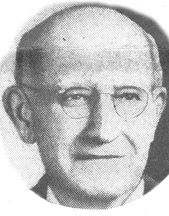1860 – 1942
Champion of the working class and urban living visionary
Reverend Dana Bartlett, a disciple of Jane Addams and Jacob Riis, studied at Hull House. Graduated in theology at Yale, he worked settlement houses in St. Louis and Salt Lake City and arrived in Los Angeles in 1896 where he founded the Bethlehem Institute. The Institute was a non-denominational social, educational and social service center for working class and immigrant people. He campaigned for public baths, reform, and workers’ rights to organize.
He reached out to Chinese and Japanese populations and was a leader in the City Beautiful project that promoted a new vision of Los Angeles. He led the move for the first Visiting Nurse program funded by any city council in America when the Los Angeles City Council subsidized the Settlement Association to administer the program. He also influenced social work education and research by organizing students from USC and Occidental College to visit the slums of Los Angeles and write up their findings, then work for their improvement.
Reverend Bartlett played an important role in the Los Angeles reform movement of the early 1900s. At that time, the Progressive movement became more prominent in Southern California and Bartlett was among a group of Los Angelenos that advocated for major reform. In 1907, he wrote The Better City, a complete program for the moral and organizational renewal of Los Angeles.
In his book, Bartlett describes his vision to beautify the city as “a place of inspiration for nobler living”. He believed that families should live in single-family dwellings rather than tenements; that manufacturing plants and industry should be moved to the outside edge of living areas; and that beaches and mountains should be easily accessible to everyone. He saw a city that would blend housing, parks, boulevards and open space with greenery. Much of what he envisioned was what attracted families from the East and Midwest to Los Angeles with its potential for a healthier urban environment.
His image of a “better city” is widely noted by Southern California historians. His futuristic perspective about model cities combined with his efforts to improve life for immigrants and the working class make him an influential leader in the history of social welfare.
He was a deeply religious man whose philosophy can be understood through his own words: “The lift of every man’s heart is upward; to help another human soul in its upward evolution is life’s greatest and most joyful privilege; to lend ourselves each to the other as an inspiration to grander living is life’s highest ministry and reward.”
« Back to list.https://www.socialworkhallofdistinction.org/?page_id=53
